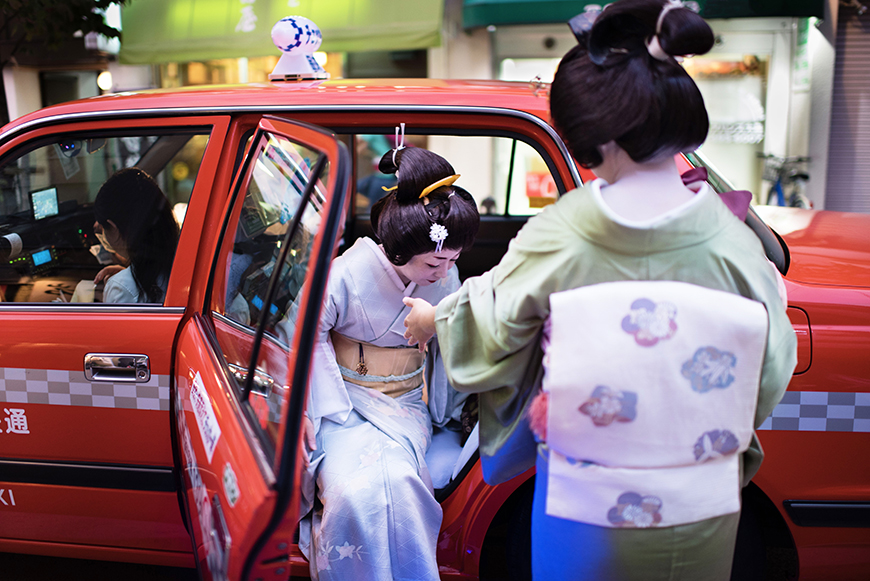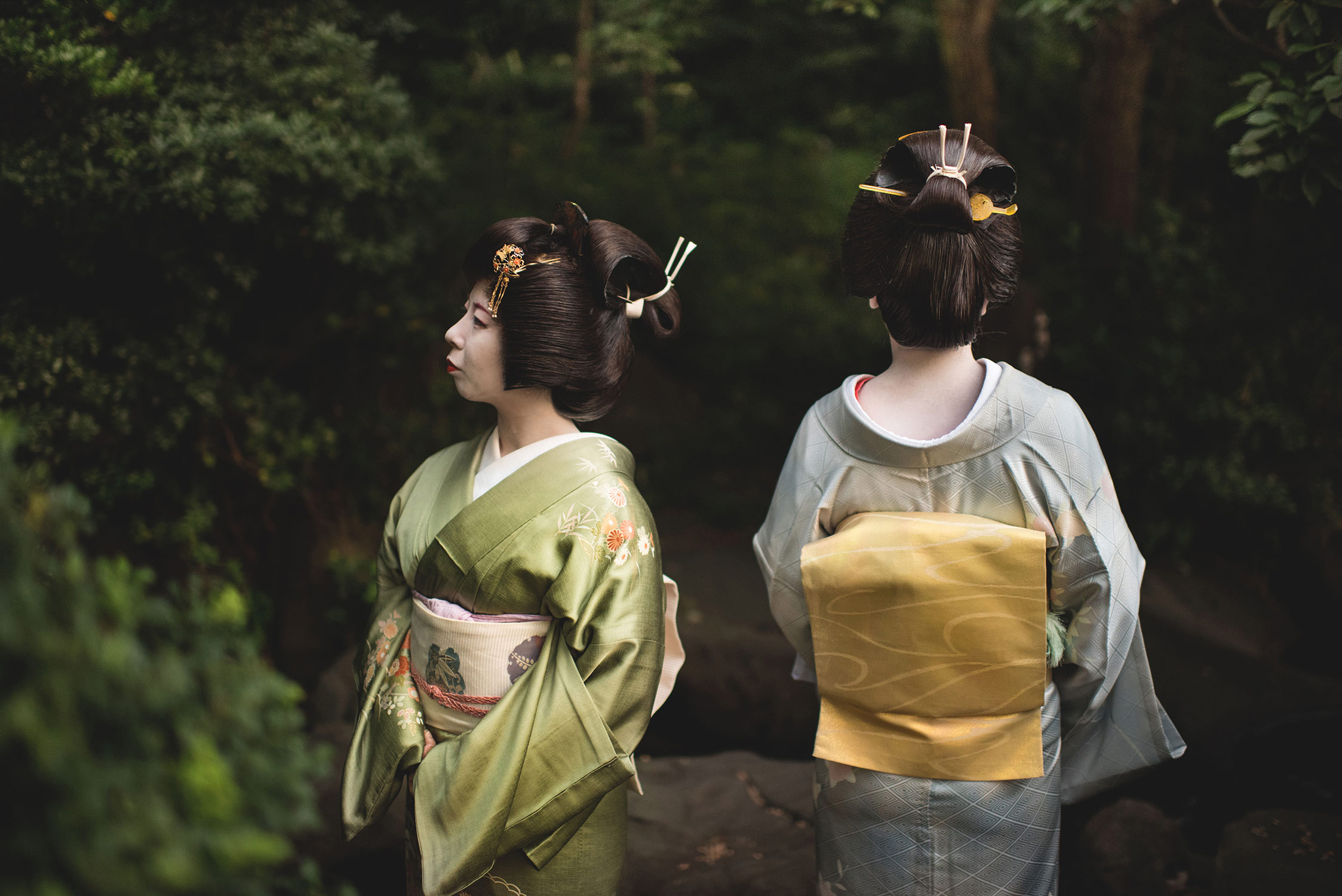
There is a certain perception of serenity and poise that I have always associated with geisha. In my mind, they were of another world, gliding gracefully wherever they went. Highly skilled in the art of conversation, dance, and music, they exuded elegance and prestige. Though hanamachi (geisha districts) flourished during slightly different times varying region by region, the largest number of geisha was seen from the 1920s to the 1930s. Due to a changing world, there are now less than 2,000 geisha in Japan, making it more of a rarity to meet one face-to-face.
When I was asked to direct a photo shoot with geisha in Tokyo I was beyond ecstatic. Thinking back, maybe it was some form of good karma from my previous encounter with a geiko in Kyoto: I had asked for the honor of photographing her instead of going all paparazzi mode like the others who rushed up to flash their cameras at her without a care to request permission first.
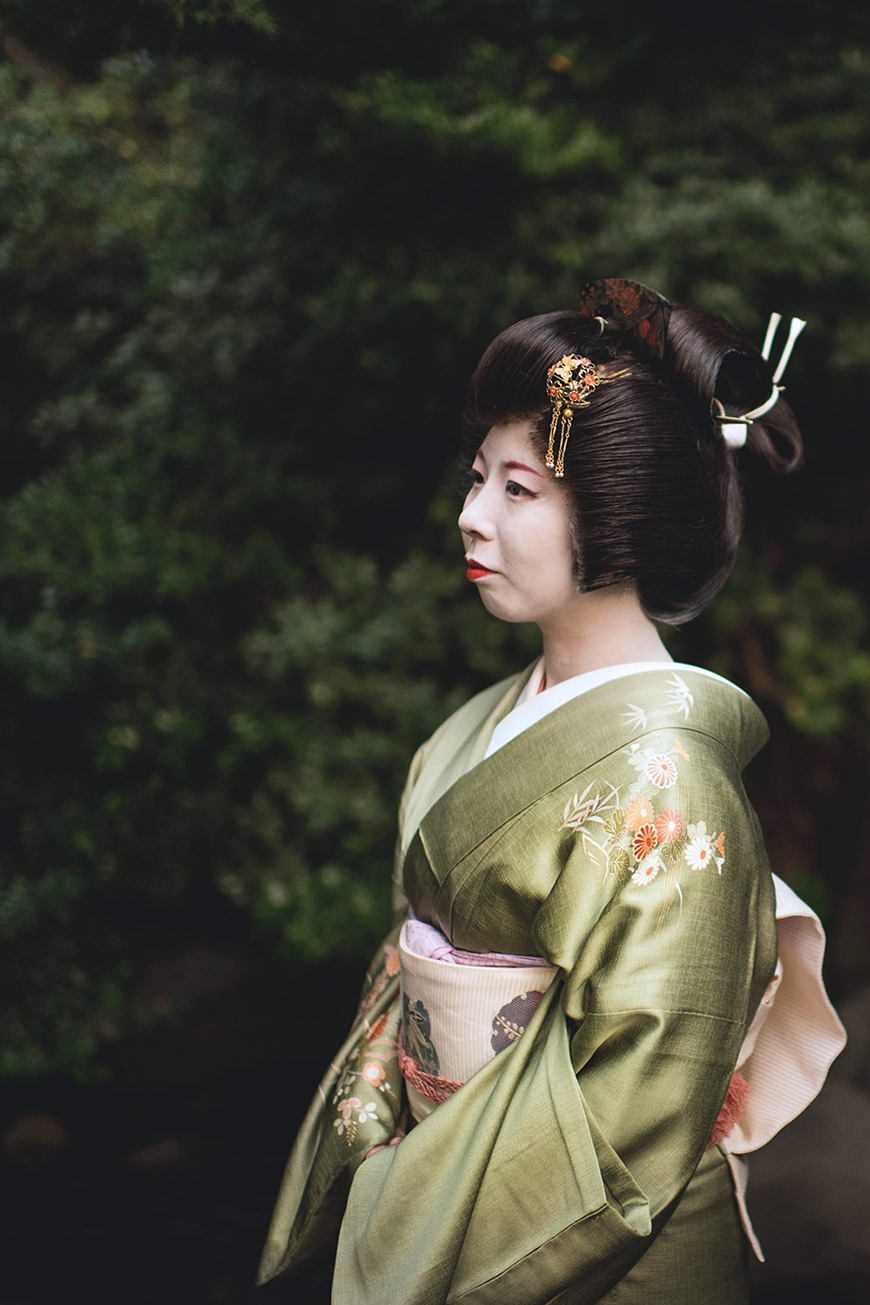
I have always been in awe of geisha culture in Japan, and the desire to learn the intricacies of their world drew me further in. The day came that I was to meet two geisha from the Yoshinoya okiya (geisha house) of the Omori Kaigan hanamachi in Tokyo: Kimiho-onesan (featured in the pale blue kimono) and Nanoha-onesan (wearing the green kimono).
As a photographer, it was quite a surreal experience to direct that particular photo shoot and ask geisha to pose. It was also enlightening because as I went in with a certain perception that they would want to be captured in a regal, almost stoic way, but that soon changed. While it certainly yielded some beautiful photos showcasing their gorgeous silk kimono and oshiroi makeup, I felt that there was another side I wanted to show.
Then, due to wonderful fortune in late 2016 I was able to interview two geisha residing in Tokyo: Kimiho-onesan from the ozashiki evening event and new acquaintance Kimicho-onesan, an American geisha living in Tokyo who is also from the Yoshinoya okiya in the hanamachi of Omori Kaigan. Kimicho-onesan delightfully offered to translate and answer any questions I had, and thus we conversed about the life of a modern geisha with thoughtful responses from herself and her onesan, the lovely Kimiho.
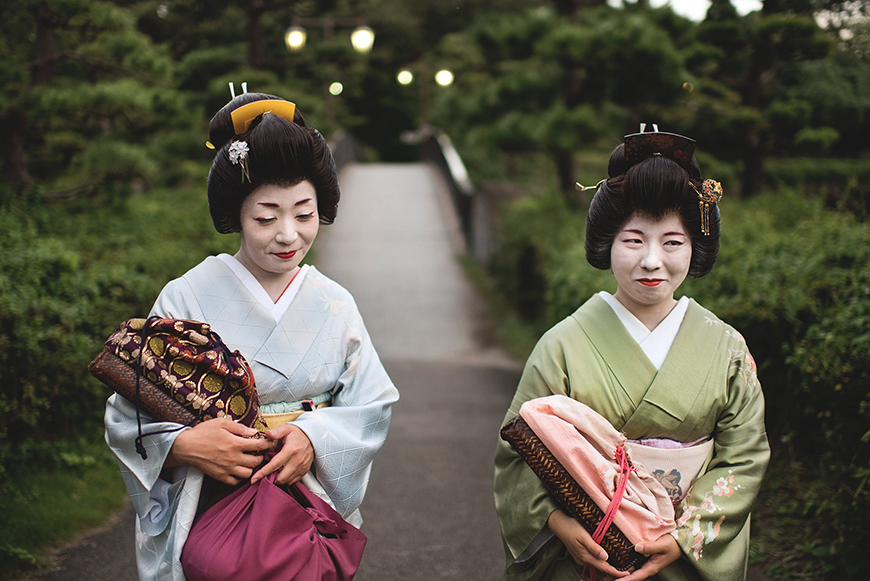
The Modern Geisha: Interview with Kimiho and Kimicho of the Yoshinoya okiya in the Omori Kaigan hanamachi
I am honored that I am able to talk about this with you! What made you want to become a geisha?
Kimiho: I had liked kimono for a long time and I wanted to find a job at which I could wear beautiful kimono.
Can you tell me a little of what the day in the life of a geisha is?
Kimiho: It isn’t very different from most people! But, when we go out we wear kimono much more often than other modern Japanese people.
Kimicho: We have a little bit more of a relaxed lifestyle here in Tokyo than in other places such as Kyoto! So we maybe will go to our classes, then if we don’t have work in the evening we have personal free time.
How long have you been training for and how long will you need to train?
Kimiho: I began last year in August, so about one year and four months!
Kimicho: I began around the same time, but I had been taking classes privately for about a year before starting training in the geisha house. Geisha usually study until they retire, which can be a short career or until the end of their lives!
What is the most difficult part of geisha life? What is the best part?
Kimiho: This is a difficult question! We have to learn and memorize new dances very quickly, which is hard! But I love performing in front of customers, that is my favorite part of the job. We also wear traditional Japanese oshiroi makeup and wear the Japanese traditional wig for our performances and most people don’t have the opportunity to see these traditional things or wear them. I love that part as well.
Kimicho: Keeping up with studies is difficult, I agree. Memorizing dances and music pieces and keeping a full repertoire is tough but very rewarding. For me, the best part about the job is being able to be a part of living history and dedicate my life to artistic study.
It is amazing to think of all the classes and the time it takes to become a geisha, including the performances and what you have to memorize. What season seems to be the busiest for geisha? Also, do all geisha learn how to play the shamisen? Do you go to one place for all your classes, or various places?
Kimicho: Our busiest season is actually right now! New Year’s is the biggest holiday in Japan, and before you have end-of-the-year parties, and in January and February you have New Year’s parties as well. Most geisha learn it, it is a standard geisha art, although some choose to specialize in other instruments like flute or drums. In districts with a kenban, a geisha union, all lessons are held there. We no longer have a kenban because we are so small, I believe it closed in the eighties. So we go to various places for lessons.
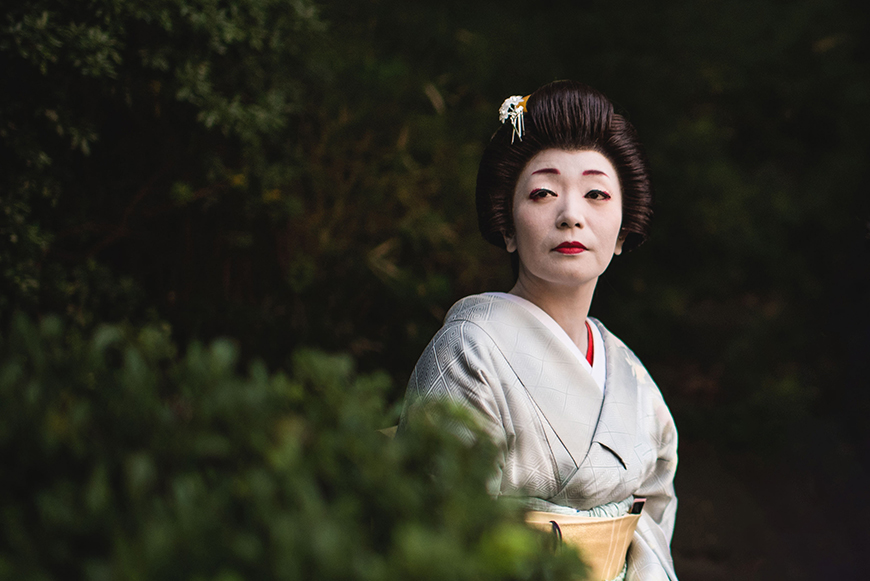
What is a geisha house like?
Kimiho: A geisha house is a bit like an office.
Kimicho: Think of it as an agency, and our geisha mother is our agent and we are all managed by her.
Kimiho: Here in Omori Kaigan we don’t live in the geisha house like in other geisha districts. Our geisha mother’s name is Noboru, she has been a geisha since her teens! She is a wonderful person, beautiful and kind.
Kimicho: She takes very good care of us!
How are modern geisha different from many years ago?
Kimiho: I was surprised to hear that you were surprised about us using our smartphones in the taxi! [laughs] We have normal day-to-day lives so we all use smartphones every day. We are mostly like everyone else.
Kimicho: Here in Tokyo like I said, we have a lot of personal freedom. In Kyoto it is much more strict, but we have our own apartments and phones and personal lives separate from our professional ones! I think in Tokyo the biggest difference between now and maybe sixty or more years ago is how busy we are. When our geisha mother was young, she had classes in the morning until the afternoon, with a short break in between to get ready for work. She worked almost every day of the week from 5 pm until almost 3 in the morning sometimes, performing at many different venues each night. Of course, a geisha‘s schedule varies from person to person and season to season, but we don’t have quite the crazy working hours that my geisha mother used to have!
Do you have a message for foreign customers about Japan or geisha culture?
Kimiho: I want people to know more about geisha. I think it’s an amazing culture. I would welcome everyone to Japan to experience an ozashiki and see geisha culture for themselves.
Kimicho: We are interested in sharing this culture and hopefully getting people excited to come to Japan and experience this beautiful country!
Thank you for tuning in to learn more about the modern geisha! Next time you are visiting Japan, I highly recommend attending an ozashiki and learning more about the beautiful world of geisha. The boutique travel agency that I photographed these lovely women for, Japan Awaits, does an excellent job of arranging an ozashiki with geisha, and I believe you can also contact the Yoshinoya okiya itself.
